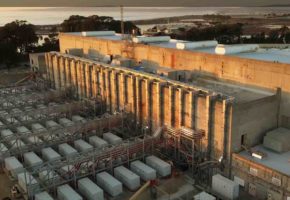Rooftop solar continues to take a big bite out of the business and operating model of Australia’s main grid, hitting new output records on Sunday and sending minimum demand records tumbling across the country.
According to data provider GPE NEMLog, rooftop solar PV hit a new peak of 48.6 per cent of total generation at 1.50pm (AEST) on Sunday, breaking the previous record of 48.4 per cent it had set at the start of the month.
But more importantly for the grid operators and competing technologies, it helped push operating demand across the National Electricity Market down to a new low of 11,009 MW, down around 215 MW from its previously low, also set on October 1.
Record shares of rooftop solar and operational demand were also set in Victoria, where rooftop PV hit a new peak of 60.1per cent of generation and sent operational demand down below 2GW for the first time to a new minimum of 1915 MW.
Rooftop solar also hit a new record share in NSW – the country’s biggest state grid – with 50.4 per cent, the first time it has contributed more than half of generation, and also set a new low for operational demand in NSW of 3664 MW, down 200 MW from the previous low. NSW still has more than 8GW of coal generation.
Tumbling operational demand levels usually means bad news for coal generators, which often get squeezed out of the market and have to bid down towards the market floor (minus $1,000/MWh) to keep running. They reckon it is cheaper to pay someone else to take the output than to switch off.
In South Australia, however, there are no coal generators left in the system – the last one closed in 2016 – and so the biggest victim of high rooftop solar PV outputs is usually utility scale solar.
On Sunday, the output from utility scale solar fell to less than one megawatt in the middle of the day as more than 455 MW of utility scale (a new record) was curtailed.
Unlike coal fired power stations, solar projects reckon its cheaper to switch off than to pay someone else to take the output. And some are obliged to do so anyway under the terms of their contracts.
There has been a slew of renewable energy share records in the grid across the last few months – spring is often the “record season” because of the good conditions for wind and solar farms and relatively mild weather. And each year the numbers are boosted by new additions to the grid.
Earlier last week, the share of renewables across the NEM hit a new instantaneous record of 72.5 per cent, and wind and solar alone hit a new peak of 70.8 per cent.
The level of “potential” renewables also hit a new peak – potential means actual output plus curtailed capacity – and reached more than 101 per cent of demand in one five minute period, and 98.5 per cent in one half hour period.
In South Australia, the records have been even more dramatic, with rooftop solar alone providing more than 100 per cent of demand, operational demand hitting a new low of 21 MW (over 30 minute period and negative over a 5 minute period), and “potential” renewables (just wind and solar) hitting a new peak of 264 per cent of demand.
In response, more batteries are being built, other longer duration storage technologies such as solar thermal are being considered, and the South Australia is also betting big on green hydrogen, where the use of electrolysers and hydrogen-powered generators can help lift minimum demand, and respond to peak demand issues.










